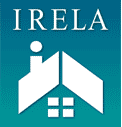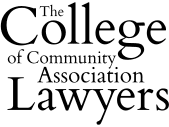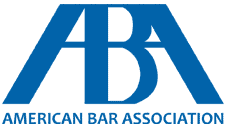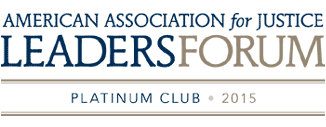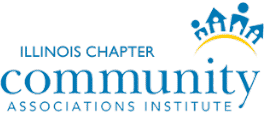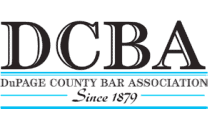 Polish,
Polish,  Ukrainian,
Ukrainian, 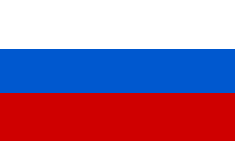 Russian,
Russian,  Hindi,
Hindi,  Spanish,
Spanish,  French and
French and  Greek.
Greek.
Why Have Condo Association Insurance Costs Doubled Since 2022?
 It has been a tough couple of years for condominium owners and homeowners associations. Property insurance costs have almost doubled since 2022, affecting all property owners but particularly condo associations and condo owners. Nowhere has this change been more acutely felt than in Florida, where condominiums have long been considered a great investment but now are facing troubling headwinds. Florida is not alone in this trend, however, as other states including Illinois and California have been affected as well. For any questions or concerns about these new developments, a qualified attorney representing condominium associations can help.
It has been a tough couple of years for condominium owners and homeowners associations. Property insurance costs have almost doubled since 2022, affecting all property owners but particularly condo associations and condo owners. Nowhere has this change been more acutely felt than in Florida, where condominiums have long been considered a great investment but now are facing troubling headwinds. Florida is not alone in this trend, however, as other states including Illinois and California have been affected as well. For any questions or concerns about these new developments, a qualified attorney representing condominium associations can help.
Data on the Rising Costs
Average commercial condo insurance costs have risen on average by 103 percent since 2022, from $72,570 to $147,3812. These types of policies cover properties including structures, irrigation systems, and roofs. In the second quarter of 2024 alone the cost rose 6.6 percent.
These numbers come from the Florida Office of Insurance Regulation, which calculated the average cost of condo insurance in Florida by combining the four types of commercial condo insurance: structural and liability, dwelling and fire coverage, wind coverage for hurricane protection, and policies that cover various types of damage. To arrive at the numbers, the number of policies was divided into the total premiums that were paid. It is important to note that prior to 2022, these numbers were not available to the public as they were considered trade secrets.
Here are some other important numbers from the report that may be of interest to home and condominium owners:
-
Average insurance cost of single-family homes: During the second quarter of 2024, the average cost of insurance for single-family homes increased by 1.3 percent.
-
Average insurance cost of condominium units: This metric also increased by 1.3 percent. Condo owners must pay this fee in addition to the condo association fees. The good news is that this is the lowest this rate has been since 2022.
-
Average insurance premium for an owner-occupied single-family home: This increased from $3,511 to $3,558 between the first and second quarters of 2024.
-
Average premium for a single unit: This increased from $1,692 to $1,715 during the same time period.
-
Average cost of fire policies: In the case of some insurance companies, these numbers rose from $52,613 to $103,433.
Anecdotally, Florida property owners have reported increases in their condo association costs that range from $300 per month to between $700 to $1000 a month in some properties. This is due in large part to rising insurance costs.
Rising Costs Nationwide
Condo associations in other states across the United States have also been hard hit by rising insurance costs, including in Illinois, New York, and California. Some condo associations nationwide that have bylaws that cap the amount by which they can raise their dues have had to pull money from funds earmarked for maintenance and repairs.
Some Good News
While there have been significant rate hikes recently, the data also shows that the increases in condo insurance costs in Florida have begun to slow down. Reinsurance cost increases have also decreased in 2024. The rate increases above pale in comparison to the data since 2022 overall:
-
Average premium for owner-occupied houses: This has increased by 27.1 percent overall, from an average of $2,798 to $3,558.
-
Average premium for insuring a privately owned condo: This likewise increased by 27.7 percent overall, from $1,342 to $1,715.
There are some creative solutions for homeowners who are short on cash to pay for some increased condo costs. For example, since 2022, Miami-Dade County offers interest-free loans of up to $50,000 specifically to pay special assessments. The program is only available to individuals who own the home as their first and primary home, meaning it is not a good option for those who use the condos as investment vehicles and rent them out.
Cost Increases Vary Depending On Condo Size and Age
The rising costs vary depending on the type of property. Perhaps unsurprisingly, price increases in condo association costs vary depending on the size of the condo, with smaller condos usually paying a smaller amount than the average, and larger condos paying a larger amount. Older buildings also have seen bigger increases as they require more repairs and special assessments to comply with the law and stronger building codes enacted after Hurricane Andrew. For example, condos from the 1980s may see increases of 15 to 20 percent, while associations from the 2000s built with high-impact windows need to spend less as they tend to already be up to code.
Other Reasons for the Rising Costs
These increases in the cost of condo insurance are in addition to the higher property assessments; the general increase in house prices has triggered higher insurance premiums, regardless of other factors. And there are yet more reasons for the rising condo association costs, such as:
-
Special assessments
-
Inflation
-
The ongoing impact of hurricanes
The Champlain Towers South Disaster
In Florida another factor that has contributed to higher costs for condo insurance and to other costs that condo owners must pay is the Champlain Towers South disaster of 2021, in which the Champlain Towers South condo partially collapsed, killing many of its residents.
Following the tragedy, lawmakers required condos over 30 years old to undergo inspections, make improvements, and ensure they have reserve funds for future repairs. To pay for these improvements, there has been a wave of special assessments often in the hundreds of thousands of dollars. This legislation mandates structural inspections and improvements, especially on older condominiums. Over one million condo owners fall under the age requirements of the law.
These laws stemming from the disaster will impose a number of other requirements on condo owners still hurting from the recent increases to condo insurance rates, including:
-
Condo associations must complete what is called a Structural Integrity Reserve Studies (SIRS) of common elements by December 31st of this year. They must inspect the condition of building elements such as the roof, load-bearing walls, the building’s foundation, walls, water and fireproofing, windows, electrical systems and anything that affects the structure of the building and would cost more than $10,000 to replace or repair.
-
The SIRS must also point out any usable portions of the structural elements that need repairs.
-
Condo associations must then recommend annual financial reserve amounts that must be met by the condo in order to pay for repairs.
-
Starting on December 31 of this year, condo associations will not be allowed to waive any necessary repairs to these structural elements. They may also not use reserve funding meant for other matters in order to cover the costs.
As a result, some associations have already raised special assessments by 15 to 20 percent in anticipation of these requirements and will likely require additional increases in those amounts after the structural inspections are completed.
The Impact Of Reinsurance Costs
Another factor that accounts for the rising costs is reinsurance costs, which rise when natural disasters take a toll. Reinsurance is the insurance that insurance companies have to pay in Florida to ensure that they are able to pay for claims for hurricanes and other natural disasters. Hurricanes Michael and Ian made a big impact on these numbers. According to some reports, the Champlain Towers collapse also contributed to reinsurance cost increases, raising them a whopping 80 percent from 2022 to 2023.
What This Means for Condo Owners
Condo owners, many of whom counted on their condo as an investment vehicle, have been hit hard by this change. For some, the mix of rising association costs and special assessments has meant that they are now required to pay sometimes hundreds of thousands of dollars which they may not have. In some cases, this means that some condo owners have to choose between paying, selling, or going into foreclosure or bankruptcy.
These developments have also, in some cases, made it more difficult for condo owners to sell their homes. For example, some associations have attempted to reduce their insurance costs by raising deductibles. While this has helped the condo associations, doing so puts a condo association outside of compliance with Fannie Mae and Freddie Mac, complicating the selling process. Condo owners then have to ask for all-cash purchases or alternative loan sources which are more expensive and typically require a downpayment of 20 to 25 percent.
Contact a Cook County, IL HOA and Condominium Association Lawyer
These insurance increases have put a strain on condo owners and the market for condominiums. Understanding the legal requirements contributing to these increases can help condominium managers and owners navigate these changes. Contact the Illinois condominium association attorneys with Dickler, Kahn, Slowikowski & Zavell, Ltd. for legal assistance. Call 847-593-5595 for a private consultation.

